Economy of Vallejar: Difference between revisions
mNo edit summary |
|||
| Line 138: | Line 138: | ||
The military sector extends its influence to education through various military schools, with its scholarship system, aiming to instruct and specialize the youth in both traditional military roles and everything related to the composition of the military, including mechanics, maintenance, and production of various devices necessary for the proper functioning of all aspects intertwined with military life. | The military sector extends its influence to education through various military schools, with its scholarship system, aiming to instruct and specialize the youth in both traditional military roles and everything related to the composition of the military, including mechanics, maintenance, and production of various devices necessary for the proper functioning of all aspects intertwined with military life. | ||
It is also noteworthy to highlight the various military fabrications in the sector, such as: 3 classes of frigates, 2 classes of aircraft carriers, 7 types of rifles, machine guns and long guns, 2 portable missile launchers, 4 types of tanks, 3 types of infantry fighting vehicles, 5 types of armored personnel carriers, 3 types of pistols and handguns, advanced missile defense systems, 4 types of howitzers (2 towed and 2 self-propelled), 5 types of tactical and combat helicopters, 5 types of fighter jets, 4 troop and military material transport planes, 2 types of automatic anti-aircraft defense systems, 6 types of reconnaissance and attack drones, 2 types of submarines, 3 types of maritime control boats, 2 type of tanker aircraft, 3 types of firefighting aircraft, and 2 types of helicopters and 2 bombers, among others, in addition to their own training versions. All products are national. | It is also noteworthy to highlight the various military fabrications in the sector, such as: 3 classes of frigates, 2 classes of aircraft carriers, 7 types of rifles, machine guns and long guns, 2 portable missile launchers, 4 types of tanks, 3 types of infantry fighting vehicles, 5 types of armored personnel carriers, 3 types of pistols and handguns, advanced missile defense systems, 4 types of howitzers (2 towed and 2 self-propelled), 5 types of tactical and combat helicopters, 5 types of fighter jets, 4 troop and military material transport planes, 2 types of automatic anti-aircraft defense systems, 6 types of reconnaissance and attack drones, 2 types of submarines, 3 types of maritime control boats, 2 type of tanker aircraft, 3 types of firefighting aircraft, and 2 types of helicopters and 2 bombers, among others, in addition to their own training versions. All products are national or produced together with allies. | ||
This sector contributes 12% of the state budget annually, but this percentage varies depending on orders and sales. | This sector contributes 12% of the state budget annually, but this percentage varies depending on orders and sales. | ||
Revision as of 16:53, 17 December 2023
In Vallejar, everything related to the economic sphere is consistently studied and analyzed meticulously and effectively, both by the government and by independent national and international organizations, especially in the Vallos region, where Vallejar maintains a significant market presence.

The reason why the economic sphere in Vallejar holds such importance is intertwined with the country's history, which has endured scarcity and hardship for many centuries, primarily due to wars and foreign powers attempting to subjugate the region centuries ago. This created both resentment and an ethical value in the population, leading to the ratification in the Vallejarian constitution after independence that national sovereignty, and therefore economic sovereignty, rests with the Vallejarian citizens.
Vallejar's economy is segmented or divided into various economic sectors, as the diversification of the economy is a strong point, greatly aiding in resisting different economic crises faced by the global economy.
| Currency | VPT |
|---|---|
| January 1 to December 31 | |
| Statistics | |
| GDP | 1,173$ Trillion |
GDP per capita | 34000$ |
| 1,9% | |
Population below poverty line | 0,7% |
| 33,3 | |
| 0.812 | |
| Unemployment | 2.8% |
Average gross salary | 27982$ |
| 22385.6$ | |
Main industries | Military
Medical Technological Development |
| External | |
| Exports | Alcoholic and non-alcoholic beverages
Military equipment Manufactured products Different national foods Others |
Main export partners | Pelaxia
Takatta Loa Puertego Rumahoki Almadaria |
Gross external debt | 24,63$ Billion |
| Public finances | |
| 2,1% | |
| 605$ Billion | |
| Revenues | 5,63$ Billion |
| Expenses | 599,37$ Billion (2032) |
Economic History
The economy of Vallejar, like all economies throughout history, has undergone changes in production quantity, produced goods, sectors, among other things. These changes are attributed to the conflicts faced by the nation, the shift in ideologies over time, and, above all, technological advancements.
Origin Era:
During the Origin Era, the economy relied on barter between tribes or different native peoples in the region. Barter-based economy was minimal due to constant conflicts and struggles among peoples for superiority and accumulation of different natural resources provided by the land.
Era of Perpetual Prosperity:
Marked by a significant reduction in conflicts, this era facilitated economic development for all tribes. They began consolidating into more organized entities open to trade with any available commodity. The economy revolved around barter, gifts of goods between states as a symbol of friendship, and the initiation of currency usage. Common currency, based on coined silver abundant in the region, became prevalent.
Early Medieval Era:
Conflicts resumed during this period between now consolidated kingdoms and barbarian states, leading to economic downturns. The economy transformed into complete autarky, with only a few excess goods traded among allied states. Modernization occurred, leading to the early stages of professionalization in the manufacturing sector. The use of currency expanded, and the first monetary entities and their respective banks were established.
Medieval Era:
Characterized by stability, this era resulted from the supremacy of Sumania, a kingdom that unified the territory under its rule. This unification shifted the economy from strict autarky to a more open one, with increased importance placed on markets with other states. Manufacturing and natural resources played a crucial role in the economy, and currency strengthened its position as the primary medium of exchange.
Colonial Era:
The least prosperous period in Vallejar's modern history, marked by Pelaxia's conquest, shifted political, economic, and social power to a foreign authority. Pelaxia exploited the region's natural resources and native labor under quasi-slavery conditions. The local currency, Sumna, was replaced forcefully by Pelaxia's currency, Salía, limiting economic freedom.
War of Independence:
During the conflict between native populations and Pelaxian conquerors, the economy came to a halt. However, reserves held by revolutionaries allowed for the purchase of weaponry and influence. The revolutionaries adopted a system where all renounced their belongings in favor of the revolutionary forces. The economy relied on the manufacturing of military equipment and food production to sustain the population and fighters. Barter systems were implemented in many parts of the territory.
Independence and Sovereignty:
After the independence conflict ended in 1829, the economic system returned to the people, officially named Vallejar. Properties were restored to those who had renounced them in favor of the revolutionaries. Reconstruction efforts were promoted, and investments in technologies and industries accelerated the process. The provisional government worked on a constitution to protect all citizens and opened political borders for external resources and international relations. In late 1829, Vallejar was peacefully integrated into the Loa Empire, a significant relief for both the population and the economy. This integration helped economic and technological development, and the official currency, the Vallejarian peseta, was established, improving the nation's economic freedom and sovereignty.
Economic Legislation
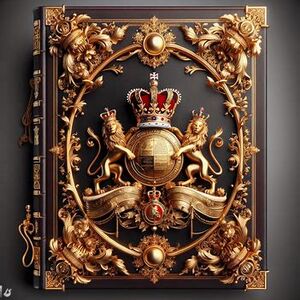
According to Vallejar's legislation, each and every business, organization, and productive association is under the protection of the Vallejar government. This means that the law protects and shelters all national and foreign enterprises within Vallejarian territory, implying the state's full capacity and reservation of the right to intervene in all significant economic transactions that take place within the national territory. This is to ensure sovereignty and the defense of national interests.
The law also gives the state power to interfere in the market if the economic situation is unstable or a crisis occurs, but most of the time the market remains managed by the companies themselves and the population that needs their services or products.
Vallejar has very specific economic legislation, which helps the formation of new companies by having favorable conditions, and it also attracts both foreign companies and capital investments thanks to the comfort and security that the market offers.
Economic Sectors
Vallejar's economic sectors are diverse, distinct, and economically broad, contributing to a well-diversified economy. These sectors are managed and maintained according to their own contexts and hierarchical characteristics. In some cases, the state may acquire ownership stakes in companies and even be part of their management teams. There are also instances where companies in a particular sector are wholly publicly owned and explicitly serve the needs of the people and/or the government. Each sector is composed of organizations, businesses, or productive associations, representing the most basic unit of the economy.
Agriculture, Livestock, and Food Production and Distribution
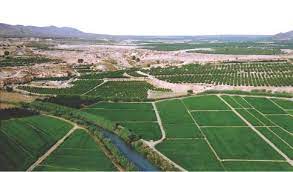
This sector encompasses all the companies that produce and distribute food. It is crucial for Vallejar's national economy, ensuring that basic domestic consumption remains dynamic and continually in motion. All sector companies are, to a greater or lesser extent, interconnected or related to each other, fostering a spirit of unity among workers.
Vallejar's agriculture stands out for its fertile lands, where barley and grapes grow with surprising ease and quality. This allows alcoholic beverages, not as acclaimed nationally, to be sold and exported abroad, where alcohol consumption is more widespread. This contributes significantly to the sector's profits, accounting for approximately 41% annually.
In addition to fertile lands, Vallejar is blessed with abundant water resources along the coast and inland, thanks to numerous rivers that hydrate every part of the national territory. These rivers are utilized for sports fishing, supplying water to localities, and natural irrigation of fields, saving landowners considerable costs. The coastal areas are also exploited for obtaining various types of fish for commercial purposes, leveraging the vast expanse of Vallejar's seas under international maritime sovereignty laws.
The statistics of this sector correlate with its importance, with graphs showing that approximately 12,2% of economic activity and state benefits come from this sector.
Tourism
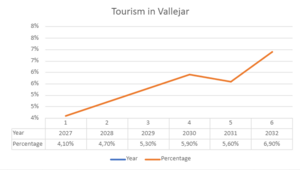
Tourism is a sector that tends to be the main driver of many economically developed Western countries, making them sensitive to changes in global geopolitics that can potentially disrupt entire economies. Therefore, although tourism is included in the service sector, it is separated into its own category in Vallejar for specific management. The Vallejar government has enacted various policies regarding the external image of the state to attract both tourists and immigrants seeking to build a life in Vallejar. Borders have also been opened to refugees generated by different conflicts.
The increase in tourism is reflected in the percentages this sector contributes to the economy, with the overall state revenue increasing both in percentage and total added value. The total contribution percentages to the overall economy 6,9% in Vallejar.
Communications and Technological Development Sector
Despite being underdeveloped in Vallejar, the communications and technology sector contributes a significant portion to the state budget and stimulates the economy with the new capabilities that technology brings to different sectors and companies in Vallejar. This sector relies heavily on technologies imported from abroad, especially from the Vallos region, Vallejar's immediate neighbors.

In the short-term future, the Vallejar government has shown openness to investing in this sector to improve technologies, network systems, and communications, as well as to increase independence from foreign influences economically. The approximate percentage of market importance and participation is notable, standing at 12,3%.
Retail Trade and Domestic Consumption
This sector encompasses all the small transactions that occur in the daily lives of citizens and the small-scale or local business activities serving the local population of a single municipality. Due to the level and quality of life of the average citizen in Vallejar, domestic consumption is the economic sector that contributes the most in terms of quantity and importance to the state budget, accounting for 20,1%. The local scale of this sector has created a favorable environment for the flourishing of local businesses. Government support for business development has led to the proliferation of small businesses, diversifying and enriching the commercial offering. The government remains open to close collaboration with this sector.
Energy Sector
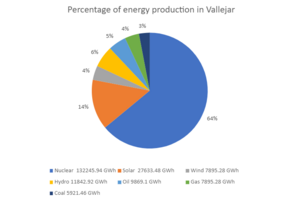
The energy sector in Vallejar is one of the most advanced in terms of general applications. It is responsible for providing energy to Vallejar's citizens and, with government assistance, maintaining energy sales contracts with regional neighbors. Vallejar's energy sector is characterized by the state's nuclear capacity, as 64% of the energy is produced through nuclear power, one of the cleanest and safest forms of energy production. Nevertheless, the national government regularly sends nuclear delegations to check the status and safety conditions of nuclear power plants.
There is also a strong commitment to renewable energy sources. According to recent data, there is a significant trend toward installing solar panels on properties, both residential and small businesses, to reduce costs and improve profit margins. Additionally, because the majority of energy production methods in Vallejar are clean, the environment is not adversely affected by this sector.
This sector contributes 6% of the state budget annually.
Military-Industrial Sector
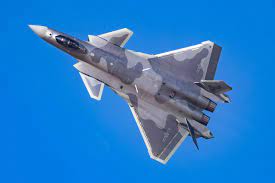
The military industry is a sector with a millennia-old tradition in Vallejar, standing as one of the strategically and economically most important sectors in the state. This sector plays a crucial role in national security, advanced technology, and the economic development of the region. The history of the military industry in Vallejar is intertwined with the very evolution of society. Since ancient times, the ability to forge weapons and develop military strategies has been an integral part of the region's identity. Techniques and knowledge passed down through generations have contributed to Vallejar's reputation as a center of excellence in the military field, recognized by armed forces worldwide.
The production of advanced weaponry, defense systems, and cutting-edge military technology has been a source of prestige for the sector. Vallejar's military industry not only focuses on weapon production but also drives technological development. Research and innovation in areas such as artificial intelligence, cybersecurity, and space technology have a direct impact on the country's defensive capabilities.
Additionally, the military sector has played a fundamental role in job creation in Vallejar for several decades, creating approximately 15% of jobs and contributing to economic growth. The presence of companies and research centers in the region not only provides employment opportunities but also attracts investments and stimulates the creation of new businesses that complement the military supply chain.
The military sector extends its influence to education through various military schools, with its scholarship system, aiming to instruct and specialize the youth in both traditional military roles and everything related to the composition of the military, including mechanics, maintenance, and production of various devices necessary for the proper functioning of all aspects intertwined with military life.
It is also noteworthy to highlight the various military fabrications in the sector, such as: 3 classes of frigates, 2 classes of aircraft carriers, 7 types of rifles, machine guns and long guns, 2 portable missile launchers, 4 types of tanks, 3 types of infantry fighting vehicles, 5 types of armored personnel carriers, 3 types of pistols and handguns, advanced missile defense systems, 4 types of howitzers (2 towed and 2 self-propelled), 5 types of tactical and combat helicopters, 5 types of fighter jets, 4 troop and military material transport planes, 2 types of automatic anti-aircraft defense systems, 6 types of reconnaissance and attack drones, 2 types of submarines, 3 types of maritime control boats, 2 type of tanker aircraft, 3 types of firefighting aircraft, and 2 types of helicopters and 2 bombers, among others, in addition to their own training versions. All products are national or produced together with allies.
This sector contributes 12% of the state budget annually, but this percentage varies depending on orders and sales.
Medical Sector and Pharmaceutical Industry
The medical sector and the pharmaceutical industry play a fundamental role in the well-being of society, providing essential resources necessary for public, private, and personal healthcare. In the context of health, these sectors are key drivers of innovation, research, and production.
The medical sector and the pharmaceutical industry intertwine to comprehensively supply the needs of health. From medications to advanced medical devices such as prosthetics and diagnostic equipment, these industries collaborate to offer solutions that address the changing and specialized demands of healthcare.
The pharmaceutical industry in Vallejar is known for its commitment to research and the development of new drugs. From creating drugs to treat chronic diseases to vaccines for preventing infectious diseases, pharmaceutical innovation has a significant impact on improving the quality of life and extending life expectancy.
Constant research is a pillar in both sectors, driving advances in understanding diseases, treatment methods, and medical technologies. Collaboration among scientists, doctors, and engineers in the medical and pharmaceutical industry has led to discoveries that have transformed healthcare worldwide.
As healthcare has become a basic right recognized by the majority of the world, the medical industry emerging in Vallejar has been able to grow continuously due to population growth and aging, as well as the need of neighboring states to obtain this essential equipment.
This sector contributes 11% of the annual state budget.
Aerospace Industry, Aircraft Development, and Production
This industry encompasses both conventional airline companies and those dedicated to the rapid technological development of this sector, as well as space companies focused on the exploration and understanding of space, moons, and planets. In Vallejar, these agencies aim to expand humanity to every possible location.
These companies collaborate closely with the technological, communication, and military sectors in a joint effort. Companies dedicated to aircraft design and manufacturing, as well as those specialized in space technologies, drive innovation in aerospace engineering. From more efficient aircraft to advanced propulsion systems, the focus on technology defines progress in this industry.
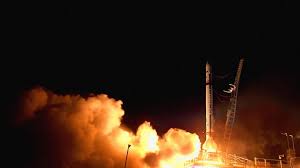
Space agencies in Vallejar generally have a lofty purpose: to explore and understand space, moons, and planets. These organizations not only focus on scientific research but also share the vision of expanding human presence in the cosmos. Space missions, both manned and unmanned, are integral to efforts to unravel the mysteries of the universe. The vision of expanding humanity throughout space includes the exploration and eventual utilization of space resources. Companies in Vallejar are exploring the possibility of using asteroids and other celestial bodies to obtain valuable minerals and materials.
The aerospace industry collaborates closely with the technological sector to incorporate digital advancements, artificial intelligence, and cutting-edge communication technologies. The convergence of these two industries has led to the development of safer, more efficient, and connected aircraft.
Additionally, collaboration between the aerospace industry and the military sector is crucial for national security and defense. Technology developed for civilian aircraft is often integrated into military applications, and vice versa. This synergy strengthens defense capabilities and fosters innovation in both sectors.
In response to environmental concerns, the aerospace industry in Vallejar is focused on developing more efficient and sustainable aircraft. From cleaner propulsion technologies to the exploration of alternative fuels, the sector seeks to minimize its environmental impact and contribute to global sustainability.
These companies are not highly profitable, as they contribute only 4,3% of the state budget during the year in relation to the investment allocated to them.
Private Companies of Goods and Services
This sector encompasses private companies that provide services and goods to the population and society at large, including private security firms, consulting and advisory services, publishing houses, environmental care, sports associations, advertising and marketing, media and entertainment, video game companies, real estate and property investments, textiles, transportation, financial services, construction, and robotics, among many others. This diverse array of companies collectively contributes to 15,2% of the annual state budget.
Private Security:
Private security companies play a crucial role in protecting assets and individuals. They offer surveillance, access control, and security consulting services to ensure a safe environment in various industries, from property protection to personal security.
Consulting and Advisory:
Consulting companies provide expertise in areas such as business management, human resources, technology, and more. Their advice is fundamental for the growth and efficiency of other companies, offering customized solutions to specific challenges.
Publishing and Publication:
Publishing houses not only bring books and publications to life but also contribute to cultural and educational enrichment. Periodicals and books covering various topics are essential for the dissemination of knowledge and culture.
Environmental Care:
Companies dedicated to environmental care offer sustainable and ecological solutions. From waste management to renewable energies, these companies contribute to the preservation of the natural environment.
Sports Associations:
Sports associations promote sports and physical activity in society. They organize events, competitions, and programs that encourage an active and healthy lifestyle.
Advertising and Marketing:
Advertising and marketing companies are key to promoting products and services. They develop creative strategies that reach specific audiences, boosting the visibility and success of other businesses.
Media and Entertainment:
The media and entertainment industry include traditional and digital media as well as entertainment platforms. From news to television programs and video games, these companies play a crucial role in disseminating information and providing entertainment.
Real Estate and Property Investments:
Real estate companies facilitate the buying, selling, and management of properties. Additionally, property investments contribute to urban development and job creation.
Textiles and Fashion:
Textile and fashion companies design, produce, and distribute clothing and accessories. They contribute to the economy and cultural expression through fashion.
Transportation and Logistics:
Transportation companies ensure the mobility of goods and people. Their efficiency is essential for trade and economic development.
Financial Services:
From banks to financial technology companies, these firms facilitate transactions, investments, and financial services that drive the economy.
Construction and Robotics:
Construction and robotics companies are fundamental for the development of infrastructure and advanced technologies.
This broad spectrum of private companies not only enriches the offering of goods and services but also plays a decisive role in the economic dynamics of the state of Vallejar. Their significant contribution to the annual budget reflects their comprehensive impact on society and the local economy.
See also
- Vallejar